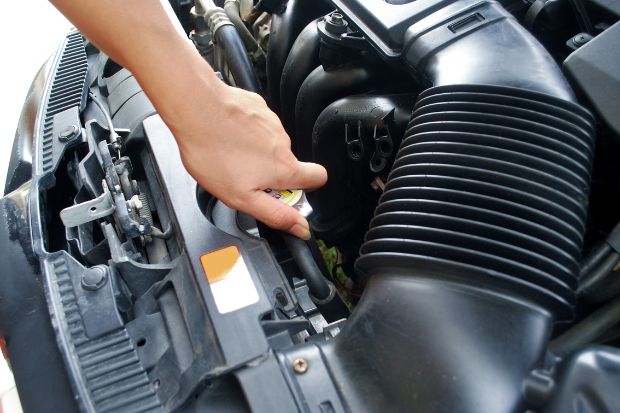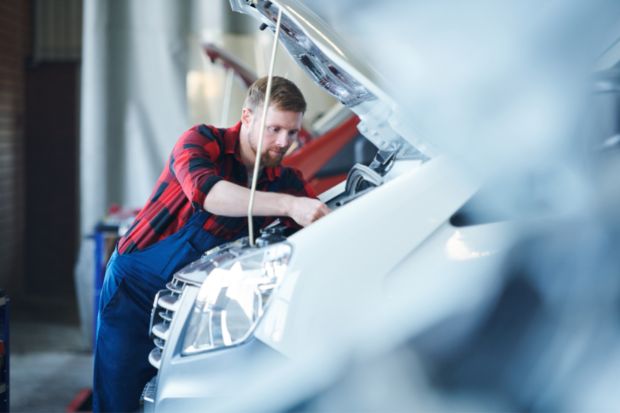Why a regular maintenance service is necessary for your car?...
Radiator in Car: The Heart of Your Engine’s Cooling System

If your car’s engine is the heart of your vehicle, then the radiator is its cooling center. Without it, things would get really hot—literally. Whether you’re a car enthusiast or a new driver trying to understand how your vehicle works, knowing what a radiator does can help you catch issues early, avoid overheating, and save on costly repairs.
What is a Radiator in a Car?
A radiator is a crucial component of your car’s cooling system. Its main job is to remove excess heat from your engine so it doesn’t overheat. Every time your engine runs, it produces heat. Without a radiator, that heat would have nowhere to go, which could cause severe damage to engine components.
Think of it like a giant heat exchanger: it pulls in hot coolant from the engine, cools it down with the help of air, and sends the cooled coolant back into the engine.
Parts and Operating Principles of a Radiator
Let’s break down how a radiator actually works and the parts involved:
- Core: The core is the largest part of the radiator and consists of small metal tubes and fins. Hot coolant flows through these tubes, and the fins help dissipate the heat into the air.
- Inlet and Outlet Tanks: These tanks channel the coolant in and out of the radiator.
- Pressure Cap: Maintains the right pressure within the system to prevent boiling or coolant loss.
- Cooling Fan: Helps draw air over the radiator when your vehicle isn’t moving fast enough to cool things naturally.
- Thermostat: Controls when the coolant flows into the radiator.
The coolant absorbs engine heat, passes through the radiator, gets cooled by air (and the fan), and then cycles back through the engine.
Where is the Radiator in a Car?
You’ll typically find the radiator right at the front of the car, just behind the front grille. It’s placed here intentionally so it can receive the maximum airflow while you drive, which helps it cool down the engine coolant more efficiently.
What Does a Radiator Look Like?
A car radiator looks like a metallic grid or a set of thin tubes surrounded by thin fins. It’s usually made of aluminum or plastic and spans across the front of the engine bay. If you pop the hood and see a silver or black rectangular component with a cap on it and metal fins, you’re probably looking at your radiator.
Other Important Cooling System Parts
While the radiator is the star, it doesn’t work alone. Other essential parts include:
- Water Pump: Circulates coolant through the system.
- Coolant Reservoir: Stores excess coolant and helps regulate pressure.
- Heater Core: Provides heat for the car’s interior using hot coolant.
- Hoses: Carry coolant to and from the engine and radiator.
Signs of a Failing Radiator
Catch radiator issues early to avoid expensive engine damage. Watch out for these signs:
- Engine overheating
- Low coolant levels
- Visible coolant leaks
- Discolored or sludgy coolant
- Radiator fins are bent or damaged
- Steam coming from the hood
If you notice any of these, it’s best to visit a professional auto repair service like GlassFixit right away.
Car Radiator FAQs
Can a car run without a radiator?
Technically, it might start, but you shouldn’t drive it. Without a radiator, the engine will overheat quickly, possibly within minutes, leading to major engine damage.
How does a car radiator cool the engine?
Hot coolant from the engine passes through the radiator’s tubes. Air flowing over the radiator (and through the fan) cools the fluid, which then recirculates back to absorb more engine heat.
How often should a car radiator be flushed?
A good rule of thumb is every 30,000 to 60,000 miles or every 2-3 years, depending on your car and the type of coolant used. Always check your owner’s manual or consult with a trusted mechanic.
Can a car radiator be repaired or does it need to be replaced?
It depends on the damage. Small leaks or cracks may be repairable, but large cracks or internal clogs often require a full radiator replacement.
How can I prevent my car radiator from overheating?
- Regularly check coolant levels
- Inspect hoses for wear or leaks
- Flush your radiator on schedule
- Never ignore the temperature warning light
- Don’t drive with a damaged radiator cap
Preventative Maintenance of Radiator
Keeping your radiator in top shape isn’t hard, but it does require some attention:
Check Coolant Levels Monthly- Low coolant is the fastest way to overheat your engine.
Inspect Radiator Hoses- Look for cracks, bulges, or leaks, especially around the clamps.
Radiator Flush- Get a radiator flush done as part of your car’s regular service. It removes rust, scale deposits, and sludge buildup.
Use the Right Coolant Mix- Always use the coolant recommended by your car manufacturer. Usually, it’s a 50/50 mix of antifreeze and water.
Check for External Debris- Clean the front grille and radiator surface to remove bugs, leaves, or dirt blocking airflow.
Final Thoughts
The radiator in your car does a lot more than most people realize. It’s a silent guardian that ensures your engine stays cool, efficient, and long-lasting. Taking good care of it can save you from surprise breakdowns and expensive repairs.
And if you ever run into radiator trouble—whether it’s a small leak or a full-on overheating emergency—GlassFixit is just a call away. From diagnostics to repair or replacement, we’ve got your back.
Visit our shop in San Jose or Santa Clara today!
San Jose: 3851 Charter Park Drive, Suite L, San Jose CA 95136
Popular Searches
Audi Windshield Replacement in Santa Clara County
Auto Car Window Tinting in Santa Clara County
Auto Glass Repair and Replacement in Santa Clara County
Auto Glass Repair in Santa Clara County
BMW Windshield Chip Repair in Santa Clara County
BMW Windshield Repair and Replacement Services in Santa Clara County
Car Window Repair in santa clara
Car Window Repair in Santa Clara County
Commercial truck windshield replacement
Dodge Windshield Repair and Replacement Services in Santa Clara County
Dodge Windshield Replacement in Santa Clara County
Glass repairs for cars near me
Honda pilot windshield replacement cost
Honda Windshield Repair and Replacement Services in Santa Clara County
Honda Windshield Replacement in Santa Clara County
Hyundai Tucson windshield replacement
Hyundai Windshield Repair and Replacement Services in Santa Clara County
Hyundai Windshield Replacement in Santa Clara County
Jeep Windshield Repair and Replacement Services in Santa Clara County
Jeep Wrangler Windshield Replacement in Santa Clara County
Kia Windshield Repair and Replacement Services in Santa Clara County
Kia Windshield Replacement in Santa Clara County
Mobile Auto Glass in Santa Clara County
Mobile Auto Glass Repair in Santa Clara County
Mobile glass replacement near me
Same day windshield repair near me
Toyota Camry side mirror glass replacement
Windshield Calibration in Santa Clara County
Windshield Chip Repair in Santa Clara County
Windshield chip repair near me
Windshield Repair and Replacement Services in Santa Clara County
Windshield Repair and Replacement Services Near Me
Windshield Repair in Santa Clara County
Windshield repair service near me
Windshield Replacement Near Me
Windshield Replacement Services in Santa Clara County
Read more Articles
Things You Didn’t Know About Windshield Humidity Sensors
Things You Didn’t Know About Windshield Humidity Sensors If you’ve...
The Road Ahead: How Advanced Driver Assistance Systems Are Changing Driving Forever
Advanced Driver Assistance Systems: A Complete Guide In 2025, a...



